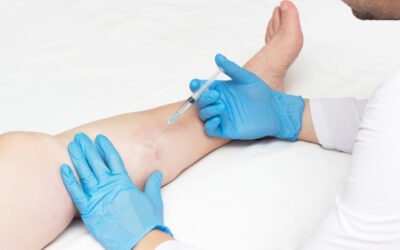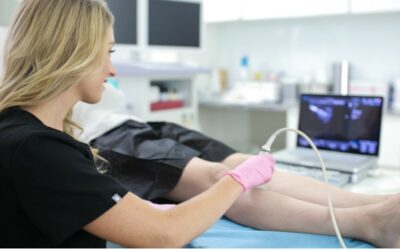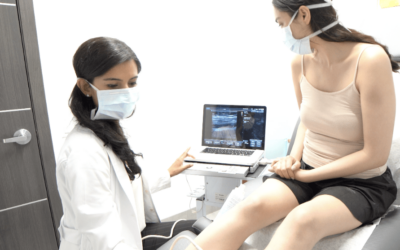What is a Doctor Who Specializes in Veins Called?
March 31, 2022
What is a doctor who specializes in veins called?
If you have spider veins and varicose veins, you may wonder what a vein dr. is called. Well, a doctor specializing in veins is called “phlebologist,” which is derived from the official name for the branch of medicine dealing with vein problems — phlebology. When you consult a phlebologist, they examine your leg veins, review your medical history, discuss your symptoms, and curate personalized vein treatment plans for you.
However, all vein doctors and phlebologists don’t necessarily address the root cause of vein problems. Physicians can claim the “phlebologist” title after a short training period and written examinations, and many of them only focus on cosmetic relief. You must find vein doctors who diagnose the root cause of your vein problems to curate comprehensive vein treatment plans — they must focus on the underlying vein disease, not just the symptoms.
Our vein treatment centers in Texas are led by highly-trained and reliable vein doctors specializing in the diagnosis and treatment of chronic venous insufficiency. Our vein doctors have passed written examinations, completed residency programs, and specialized in the minimally invasive treatment of spider veins and varicose veins. If you have spider veins and varicose veins, please schedule an appointment today.
When should I see a vascular specialist?
You should see a vascular specialist if you have any of the signs or symptoms of chronic venous insufficiency, the root cause of most vein problems. Venous insufficiency is a medical condition wherein your vein valves collapse. In healthy veins, the valves act as one-way doors that facilitate smooth blood circulation to the heart, often against the force of gravity. When your vein valves malfunction, blood flows backward to accumulate in the leg veins, eventually leading to vascular dilation and the external protrusion of varicose veins.
Spider veins and varicose veins are the most visible symptoms of vein disease, but the early signs of vein disease start manifesting a lot earlier. However, the early signs and symptoms of vein disease are usually misattributed to aging or exhaustion because they’re fairly benign. Chronic venous insufficiency is actually one of the most underdiagnosed medical conditions because its early symptoms are so often overlooked. Generally speaking, the signs and symptoms of vein disease worsen at the end of the day or after long periods of sitting or standing still.

Please schedule an appointment with a vein and vascular doctor if you notice the following signs and symptoms of chronic venous insufficiency:
- Leg heaviness
- Frequent leg cramps
- Persistent leg pain
- Persistent leg swelling
- Restless leg syndrome
- Throbbing leg veins
- Spider and varicose veins
- Skin discoloration
- Rust-colored, leathery patches
- Leg ulcers (non-healing wounds)
- Blood clots in leg veins (deep vein thrombosis)
How can I improve circulation in my legs while sitting?
The risk of spider veins and varicose veins is higher amongst individuals with occupations that involve long periods of sitting or standing still, such as nursing, driving, teaching, or desk jobs. If you sit or stand still for long periods, blood may accumulate in your leg veins because of gravity, increasing the risk of vein disease. If you have a job that involves long periods of sitting, you can minimize the risk of vein disease with these tips:
- Elevate your legs above your heart’s level while sitting. This will encourage blood to flow towards your heart because of gravity, minimizing blood accumulation in leg veins.
- Take short walking breaks after every 15 to 30 minutes. You don’t have to take long breaks, just enough to stretch your legs, move your legs, and get your blood flowing.
BOOK AN APPOINTMENT
Vein Treatments are covered by most major medical insurances, including Medicare. Verify your coverage for FREE today!
Does drinking water help circulation?
Drinking water certainly improves blood circulation, helping more blood flow towards your heart. Remaining hydrated also strengthens your vein walls, thus minimizing the risk of collapsed vein valves. However, drinking plenty of water won’t prevent varicose veins or treat varicose veins altogether.
What is the best exercise to improve circulation?
If you want to improve blood circulation and minimize the risk of chronic venous insufficiency, you must engage in cardiovascular exercises that work your calf muscles, such as running, swimming, cycling, walking, and yoga. These exercises improve blood circulation and increase blood flow towards the heart. Furthermore, if you have accumulated blood in your leg veins, your calf muscles will push them towards the heart.
How is the diagnosis and treatment of vein disease done?
The diagnosis and treatment process for chronic venous insufficiency is fairly straightforward. During your initial consultation, the vein doctor will examine your leg veins, review your medical history, discuss your symptoms, and administer an ultrasound diagnostic scan (duplex ultrasound) to visualize the blood flow in your leg veins. This will confirm the presence or absence of vein disease, helping the vein doctor curate a personalized vein treatment plan.
If you have chronic venous insufficiency, the vein doctor may recommend radiofrequency ablation, endovenous laser ablation, or venaseal. These procedures involve channeling thermal energy, laser energy, or medical adhesives into the diseased vein to make it collapse, rerouting the accumulated blood into healthier leg veins. After the primary vein treatment, the vein doctor may perform ambulatory phlebectomy or sclerotherapy to remove superficial varicose veins and spider veins.
If you don’t have chronic venous insufficiency, the vein doctor will immediately proceed with cosmetic vein treatments — sclerotherapy or ambulatory phlebectomy.
Where can I find a good vein and vascular specialist?
Our state-of-the-art vein treatment centers in Texas are led by highly-skilled and compassionate vein and vascular doctors. Our vein doctors specialize in the latest minimally invasive spider vein and varicose vein treatments — you can schedule an appointment online for more information.
Meet Our Houston
Vein Doctor

Calvin Jung MD
Spider Vein and Varicose Vein Doctor
Dr. Jung focuses on spider and varicose vein removal by implementing minimally-invasive vein treatments such as sclerotharpy, radiofrequency ablation, clarivein & VenaSeal.
WHAT TO EXPECT IN OUR
Texas Vein Center
contact us today
Call us
Book online
Visit our Book Appointment page and instantly request an appointment at a Texas vein center near you. We offer Free Insurance Verification before your appointment.
Get directions
Learn how to easily get to the Texas vein center nearest to you.
FEATURED POSTS BY VEIN DOCTORS
What Does a Vein Clinic Do? Top Vein-Related FAQs, Answered
What Does a Vein Clinic Do? Top Vein-Related FAQs, AnsweredApril 24, 2022What does a vein clinic do?A vein clinic is a medical center responsible for the diagnosis and treatment of vein-related conditions, such as spider veins and varicose veins. As such, vein clinics...
What is a Varicose Vein Specialist Called? We Answer Your Vein Treatment Questions
What is a Varicose Vein Specialist Called? We Answer Your Vein Treatment QuestionsApril 23, 2022What is a varicose vein specialist called?The official terminology for a varicose vein specialist is a “phlebologist.” The name is derived from “phlebology,” the branch of...
Are Varicose Vein Treatments Covered by Insurance? And Other Vein-Related FAQs
Are Varicose Vein Treatments Covered by Insurance? And Other Vein-Related FAQsApril 23, 2022Are varicose vein treatments covered by insurance?Generally speaking, insurance policies cover medical treatments that are deemed “medically necessary.” As such, to understand...
What Kind of Doctor Specializes in Veins? We Answer Your Top Vein Questions
What Kind of Doctor Specializes in Veins? We Answer Your Top Vein QuestionsApril 23, 2021What kind of doctor specializes in veins?Vein doctors, also known as phlebologists, are the medical professionals who deal with vascular health, including the diagnosis and...



